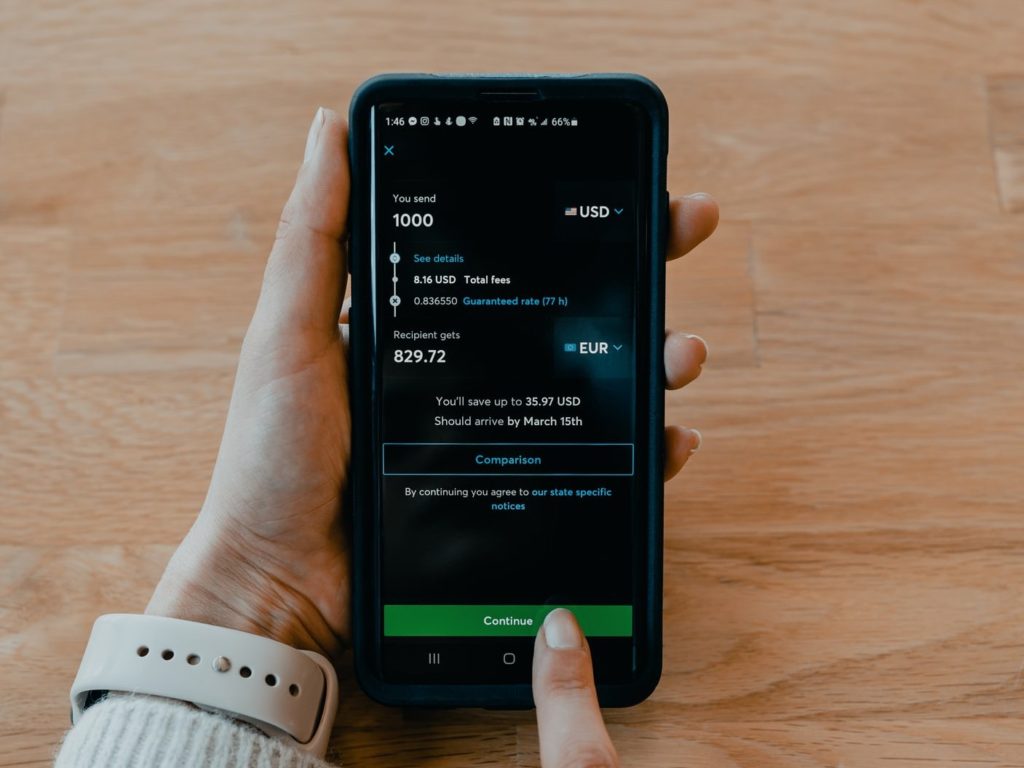Imagine you’re standing at the entrance of a maze, SaaS funnel, where every twist and turn leads to potential growth. Now imagine if there was a roadmap that guided you through this labyrinth.
SaaS Funnel Mastery: Boost Conversion, Ensure Recurring Revenue
Curious? Stick around!
We’ve all been there – navigating the complex corridors of SaaS sales, wondering how to attract more qualified leads or reduce customer churn. However, the complexity of SaaS sales does not have to be a barrier; join us on this journey and learn how to effectively optimize each stage.
In this deep dive into the world of SaaS funnels, we’ll journey together through each stage – from creating awareness about your product right down to retaining those hard-earned customers. You’ll discover strategies for optimizing each phase and uncovering hidden growth opportunities within your business.
I’m not just tossing theories your way. I’ve got practical strategies and real-world examples ready to send your revenue soaring! Let’s dive in.
Table of Contents:
- Understanding the SaaS Funnel
- Key Stages of the SaaS Funnel
- Importance of Customer Retention in SaaS Funnels
- The AARRR Framework in SaaS Funnels
- Optimizing Each Stage of the SaaS Funnel
- Key Metrics to Track in SaaS Funnels
- Tools and Software for SaaS Funnel Optimization
- FAQs in Relation to SaaS Funnel
- Conclusion
Understanding the SaaS Funnel
The SaaS funnel is more than just a marketing tool—it’s a compass that guides your business through the stormy seas of customer acquisition and conversion. So, what exactly is this vital instrument in the SaaS industry?
A SaaS sales funnel, also known as a conversion or marketing funnel, maps out the journey potential customers take from their first contact with your brand to becoming paying users. It doesn’t stop there though; it extends beyond that first payment and focuses on creating recurring revenue—a characteristic unique to subscription-based businesses like ours.
In essence, every stage within this multi-staged selling process serves an ultimate goal—to convert visitors into loyal customers who stick around for months (or even years.). This crucial aspect differentiates it from other funnels used by e-commerce businesses which often focus only until purchase.

The Anatomy of The SaS Funnel
Like any robust structure, our SaaS funnel stands tall on several pillars—awareness, interest, decision-making and action stages.
We start by building brand awareness. At this stage we’re not trying to sell anything yet. We are just letting potential users discover us organically via blog articles or paid ads—and SEO strategy plays a pivotal role here. Our aim? To be seen as thought leaders in our niche so when they need help solving pain points related to our product offering—they think of us.
Moving down we reach the interest phase. Here we engage potential customers using strategies like free trials or downloads. By providing them with detailed information about how our product solves their problem—we position ourselves as credible resources they can trust.
The decision-making stage follows. Utilizing case studies and client reviews, we demonstrate to prospects that our organization is the ideal decision.
Last but not least is the action phase. It’s where all previous stages culminate in potential customers making a purchase or signing up for a subscription service—effectively converting them into paying users.
Key Thought:
The SaaS funnel isn’t just a tool, it’s your business compass. It maps the customer journey from first touch to loyal patronage. Unique to subscription businesses like ours, it aims for recurring revenue—not just one-time purchases. Its stages—awareness, interest, decision-making and action—are all designed with conversion in mind.
Key Stages of the SaaS Funnel
The SaaS funnel, much like its physical counterpart, is wide at the top and narrow at the bottom. It represents a customer’s journey from initial awareness to conversion – becoming a paying user. Each stage plays a pivotal role in shaping this journey.
Awareness Stage in SaaS Funnel
In our daily lives, we become aware of many things: new trends, products or services that could solve our problems or make life easier. The same applies to potential customers in your SaaS business. This first stage involves raising brand awareness among potential users.
Raising interest can be achieved through blog posts about pain points that your product solves or case studies showcasing how you’ve helped other businesses succeed. But remember: trust comes before transactions. At this juncture, it’s not about sales but rather teaching and forming connections with potential customers.
Engagement Stage in SaaS Funnel
Moving on from just being known to actually engaging with potential customers requires more than catchy headlines and interesting content. To turn curious visitors into qualified leads during this second phase of the SaaS sales cycle takes effort and strategy.
This is where free trials play an important part by letting prospects explore your product firsthand without any financial commitment yet involved—just their email address required for sign-up. And if they’re hesitant? Offering them downloadable resources might help tip the scales towards engagement too.
Awareness Strategies Tactics: Blog Posts, Case Studies, SEO Strategy Purpose: Raise Awareness and Trust Building with Potential Customers
Engagement Stage Strategies Tactics: Email Marketing, Free Trials, Downloadable Resources Purpose: Boost User Involvement and Transform Visitors into Qualified Prospects
Importance of Customer Retention in SaaS Funnels
In the bustling world of SaaS businesses, a crucial element that often takes a backseat is customer retention. But here’s something to consider: it plays an indispensable role in generating recurring revenue.
Customer churn – when users stop using your service and move on – can significantly impact monthly recurring revenue (MRR). ProfitWell, for instance, highlights how reducing churn by 5% could increase profits between 25-125%. That’s quite the range.

A Deep Dive into Recurring Revenue and Churn Rate
SaaS companies rely heavily on MRR because their business model isn’t about one-time purchases; it’s about building long-term relationships with customers who provide steady income month after month. Every time you lose a customer, not only do you need to find another one just to stay at the same level but also face potential loss of future income from upselling or cross-selling possibilities.
To put this into perspective let’s say if your average lifetime value per user is $1000 and your company experiences an annual churn rate of 10%, then each lost subscriber equates to losing $100 off the bat. And we haven’t yet factored in marketing costs associated with acquiring new customers which usually are higher than retaining existing ones.
Fighting Churn With Excellent User Experience
An effective way to combat customer attrition involves focusing intensely on improving user experience. Why? Because satisfied users tend not just stick around longer but become advocates for your product within their networks – multiplying effects of word-of-mouth marketing.
A SuperOffice survey showed that 86% of buyers are willing to pay more for a better customer experience. So, investing in enhancing user experiences can help your SaaS product stand out from the crowd and keep customers coming back month after month.
The Role of Customer Support in Retention
We all know the drill – getting stuck in a tough customer service situation. But, it’s ironic because these moments can actually be golden opportunities for businesses.
Key Thought:
Don’t overlook customer retention in your SaaS funnel—it’s key to securing steady, recurring revenue. Lowering churn rates and focusing on improving user experience can make a big difference. And remember, sometimes tricky customer service situations are actually golden opportunities for boosting loyalty.
The AARRR Framework in SaaS Funnels
Ever heard of pirates steering the course for SaaS companies? No, we’re not off our rocker. We’re talking about the AARRR framework, also known as the Pirate Funnel. This savvy method breaks down the customer journey into five critical stages: Acquisition, Activation, Retention, Referral, and Revenue.
The Acquisitions Stage
At this stage of your SaaS funnel design process, it’s all hands on deck to grab attention and lure potential users aboard. Your ultimate goal here is user discovery – making sure people know you exist. Paid ads can play a pivotal role, but don’t forget about organic search either. Make sure your SEO strategy helps you easily show up when potential customers are searching for solutions that your product solves.
To optimize acquisition efforts, make use of tools like Google Adwords. Not only does it help attract new leads but provides detailed data which lets you analyze how well those leads match with what you offer.
The Activation Stage
Moving onto activation – or as I like to call it “making things official”. At this point in your sales cycle, prospects should have enough trust in your brand to start engaging more seriously with what you offer; maybe by signing up for free trials or giving their email address.
This step needs a strong value proposition that convinces customers why they should invest time (and later money) into using your service over others’. Remember one thing though – nobody likes being tricked into handing out personal information, so always be transparent about what benefits they get from activating.
The Retention Stage
We’ve won them over…now let’s keep ’em. Customer retention is vital for SaaS businesses due to the recurring revenue model. It’s about keeping customers happy, fixing any issues that may lead to churn, and consistently proving your value.
Think about it, boosting customer loyalty by a mere 5% could skyrocket your profits in no time. It’s worth the effort.
Key Thought:
Dive into the AARRR framework, also known as the Pirate Funnel. This strategy splits your SaaS customer’s journey into five parts: Acquisition (capturing interest), Activation (creating trust and involvement), Retention (maintaining happy, loyal customers), Referral, and Revenue. Leverage tools like Google Adwords for acquisition; forge a compelling value proposition for activation; and never stop.
Optimizing Each Stage of the SaaS Funnel
If you’ve ever felt like your SaaS sales strategy is a leaky bucket, then buckle up. It’s time to patch those holes and maximize your conversion rate by optimizing each stage of your funnel.
Acquisition Stage Optimization
The acquisition phase in any SaaS business starts with a question: How do we get potential customers to even notice us? You need to make sure that they not only see you but also understand what problems your product solves. This understanding begins when users discover you for the first time, be it through organic search or paid ads.
Your marketing strategy plays a pivotal role here. The aim should be more than just brand awareness; it’s about creating an image of being a credible resource. Offering free trials can help engage potential customers at this point, letting them easily understand how your product fits into their lives.
Google Adwords, with its targeted advertising capabilities, could play an essential part in raising awareness among relevant audiences.
Activation Stage Optimization
You got leads through the door (hooray.), but now comes another challenge – getting these potential users hooked on what you offer so much so that they turn into paying customers. Remember: Your ultimate goal isn’t just acquiring leads; it’s customer conversion.
To accomplish this feat requires making every touchpoint count during this prospects’ stage. Personalized email campaigns can work wonders here as they build connections between businesses and consumers beyond mere transactions. If used correctly, these emails will convince customers about why staying with your service benefits them over time.
Zapier ‘s automation tools may come handy while setting up these campaigns. Also, a key stat to remember: Optimizing each stage of the funnel is essential for converting leads into paying customers.
Think of this journey’s beginning like a first date with your SaaS product. Don’t rush or spook them. Instead, let them see how simple it is to use your service and assure potential customers that your solution will tackle their problems.
Key Thought:
Fix your SaaS sales strategy by focusing on every funnel stage. Start with catching the attention of potential customers and showing them how your product solves their problems. Use targeted ads and free trials to boost awareness and engagement. But don’t stop at lead acquisition; convert these leads into paying customers using personalized emails that highlight the benefits of sticking with your service.
Key Metrics to Track in SaaS Funnels
In the SaaS industry, numbers are your guiding light. They reveal the truth about your sales funnel’s performance and point you towards areas that need improvement.
Measuring the success of a SaaS funnel can be accomplished by taking into account several metrics, such as revenue expansion, customer churn rate, CLV (customer lifetime value), and CAC (Customer Acquisition Cost). So let’s dig into each one.

Revenue Growth
Revenue growth, as its name suggests, measures how much your company’s income is increasing over time. This metric plays a pivotal role in understanding whether or not your strategies are effective at attracting potential customers and converting them into paying users.
Your monthly recurring revenue is particularly significant here because it reflects steady streams of income from subscription-based models typical for many SaaS businesses. Keep an eye on this number; if it rises consistently, then congratulations. You’re doing something right.
Customer Churn Rate
No one likes goodbyes but they’re part of any business – more so in the world of SaaS where customer churn rate, which measures lost customers over a given period relative to remaining customers base, matters immensely. A high churn indicates problems with user experience or product solves issues making users leave before you have had enough chance to turn their initial interest into loyalty.
HubSpot has some great resources on understanding and reducing churn rates.
Remember: It’s often easier to retain existing customers than acquire new ones.
Customer Lifetime Value (CLV)
Many SaaS companies make a misstep by centering exclusively on obtaining new clients while disregarding the worth of existing ones. That’s where Customer Lifetime Value, or CLV, comes into play.
CLV gives you a peek at the total cash a customer might drop into your business during their subscription lifetime. It’s like your guide on how much to splash out.
Key Thought:
Tracking the right metrics is crucial in SaaS funnels. Keep tabs on revenue growth, customer churn rate, and Customer Lifetime Value (CLV). Rising monthly recurring revenue signals success, while a high churn indicates potential issues to fix. And don’t forget – existing customers can be just as valuable as new ones.
Tools and Software for SaaS Funnel Optimization
The SaaS landscape is filled with tools that can help streamline your funnel. Let’s look at some key ones.
Ahrefs: A Powerful SEO Tool
Ahrefs offers an extensive suite of SEO tools to improve organic search rankings. It aids in identifying potential keywords, analyzing competitors’ backlink profiles, and monitoring ranking progress.
Semrush: Your Go-to Marketing Toolkit
Semrush, a comprehensive marketing toolkit, plays a pivotal role in enhancing brand awareness by uncovering valuable insights about competitors’ strategies.
Facebook Business Manager: Harness the Power of Social Media Ads
Funnels need fuel from paid ads too. Facebook Business Manager lets you manage Facebook ad campaigns effectively while providing granular targeting options for better customer acquisition.
Sprout Social & Hootsuite: Unleashing the Potential of Social Engagement
Sprout Social and Hootsuite, two leading social media management platforms allow businesses to engage potential customers through timely content delivery across multiple channels which could potentially lead into higher conversion rates.
Harnessing App Analytics for User Insights
App Analytics, a tool that provides crucial user experience data on how users discover your product solves many pain points during the optimization process.
These tools don’t just create customer funnels, they shape the entire journey from start to finish. Each tool is a cog in the machinery of your SaaS funnel design.
The right combination can help you understand where leads drop off and why. So, how do these tools aid in different stages?
Awareness: Ahrefs & Semrush
Have we been discussing Ahrefs?
FAQs in Relation to SaaS Funnel
What is a SaaS funnel?
A SaaS funnel maps out the customer’s journey from first hearing about your product to becoming a paying user.
How to build a funnel in SaaS?
To build a successful SaaS funnel, start with awareness and engagement stages, followed by exploration and conversion steps. Keep retention strategies in mind throughout.
What are the stages of the SaaS sales funnel?
The typical stages include Awareness, Engagement, Exploration, and Conversion. Some also incorporate Retention as an essential stage for recurring revenue businesses like SaaS.
What is the top funnel in SaaS?
The ‘top’ refers to initial touchpoints where potential customers become aware of your software solution—like social media ads or content marketing efforts.
Conclusion
Mastering the SaaS funnel isn’t an overnight job. It takes time, patience, and a deep understanding of each stage – from raising awareness to keeping customers loyal.
Remember, in this game of growth, your ultimate goal is customer satisfaction. Ensure leads don’t drop off by being a credible resource at every step. Be it blog posts or case studies; use them wisely to engage potential customers.
The AARRR framework isn’t just pirate talk; it’s your map for success in the SaaS world! Acquisition through SEO strategy or paid ads? Check! Activation with free trials that let users discover how your product solves their pain points? Double-check!
In all these efforts remember one thing: tracking key metrics like conversion rate and churn can be pivotal in tweaking strategies and ensuring revenue growth.




